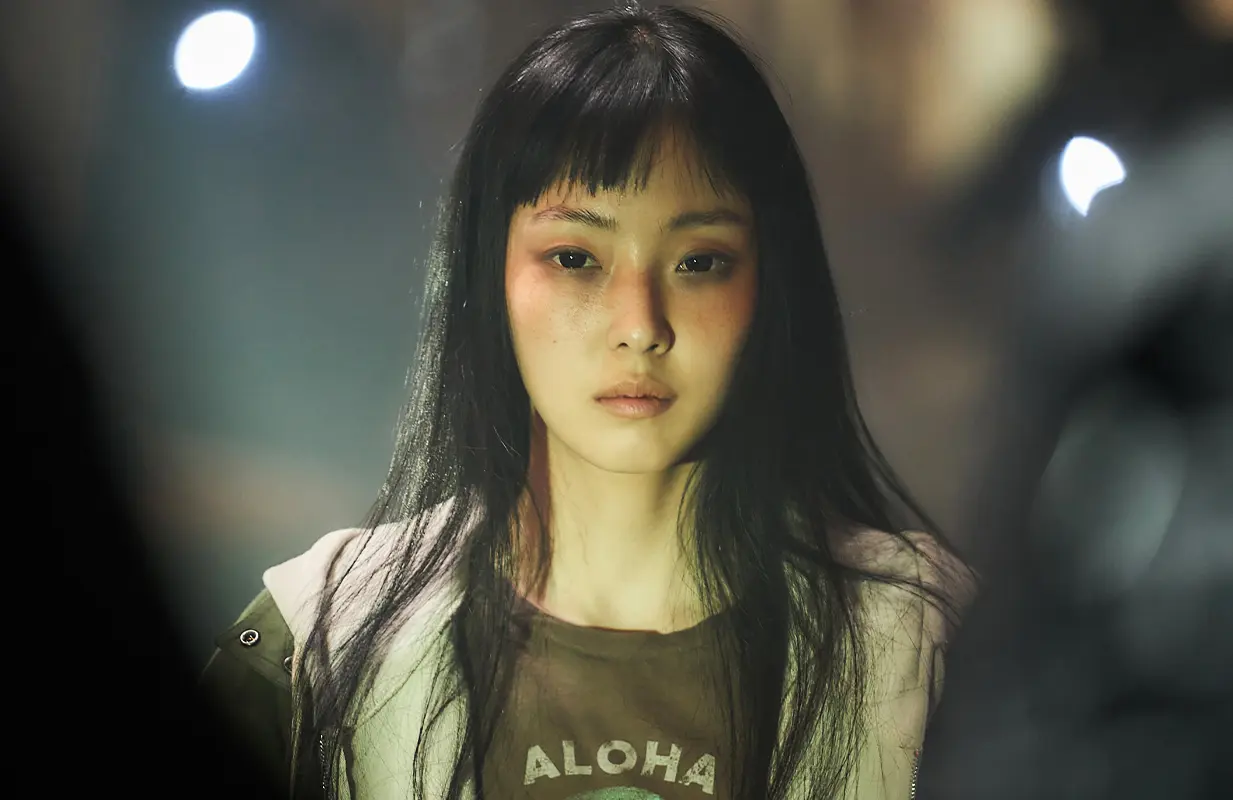Netflix's Parasyte: The Grey Accomplishes What Few Live-Action Adaptations Have
-
 Jeon So-nee in Parasyte: The Grey (Photo: Netflix)
Jeon So-nee in Parasyte: The Grey (Photo: Netflix)Leave it to Yeon Sang-ho, who's made a career out of VFX-heavy science fiction like Train to Busan and had already proved adept at translating the Hellbound webtoon to live action, to make Parasyte: The Grey a thrilling, compelling live-action body horror story that does what few adaptations do: justify its existence.
Sang-ho and co-writer Ryu Yong-jae retain the basic premise of Hitoshi Iwaaki's original best-selling manga Parasyte — alien parasites are invading Earth and taking over humans, and the protagonist manages to avoid getting fully infected, retaining their humanity and conscience while having the parasite take control of one part of their body — while doing away with the high school setting of the manga (which had a lot of silly excuses for unexplained events and crude jokes wherein the parasite turned the protagonist's hand into embarrassing things). This allows Parasyte: The Grey to focus on the body horror of the infested humans morphing their heads into impossible shapes (mostly tentacles with blades at their ends) and the manga's ideas about coexistence and questioning who has the right to live.
Early in the first episode, it becomes clear that this will not be a remake, but an expansion of the universe of the original. By setting the action in Korea rather than Japan, with new characters and a new story, Parasyte: The Grey manages to pay homage to its source material without taking away from what made it special and popular. This starts with the new protagonist, Su-in (Jeon So-nee). Her relationship with the parasite in her brain is somewhat of a Jekyll and Hyde situation; only one can take full control of the body at a time.
Jeon gives Su-in and the parasite she calls Heidi distinct mannerisms and personalities that play into the script's darker tone. For Su-in, having a parasite that grants her great strength and abilities is not her superhero origin story, but rather the latest tragedy in a life full of them, as she has experienced the worst of humanity's cruelty and stigmas even before a parasite invaded her brain. For Heidi, however, being only half in charge of her host body means being the most vulnerable of the alien parasites. They would be dead if they weren't together. They are brought together by happenstance and have no choice but to coexist.
Anthropocentrism is at the crux of Sang-ho’s adaptation, as Parasyte: The Grey focuses on asking whether humans really have more of a right to exist than the parasites who are just trying to stay alive. Like the manga, a big part of the season deals with the cruelty of humanity, here portrayed via police brutality and discriminative persecution of suspects.
Lee Jung-hyun from Decision to Leave plays Jun-kyung, the leader of a task force in charge of finding and killing the parasites, mostly through cruel means like torturing a parasite-infested man to find other parasites. The way Parasyte: The Grey explores and portrays prejudice and the clash with humans versus what they perceive as monsters lies somewhere between the humorous complexity of the source material, which dials up philosophical talks over time, and the pedal-to-the-metal despair and exploration of bigotry and hatred in Devilman Crybaby.
Though the script, in part due to a short episode count, is a bit superficial and full of tropes, it is well executed. Take Jun-kyung herself, who is mostly just your standard maniacally evil cop relentlessly obsessed with capturing Su-in despite having plenty of clues that she might be wrong, and is reminiscent of Inspector Javert or Inspector Lunge from Monster. Jung-hyun overcomes the thin character development mostly by embracing the weirdness of the show's parasite-filled world and playing Jun-kyung as a mustache-twirling villain with great gusto.
Indeed, Parasyte: The Grey relishes in mining as many moments of body horror fun as it can out of its premise, and Yeon shows why he is one of the best Asian directors working with VFX today. There are elaborate set pieces — one standout involves an abandoned amusement park that becomes the setting of a big shoot-out — a long-take car chase shot with a drone that would make Michael Bay jump out of his seat in glee, and of course, plenty of tentacle-blade fights. Likewise, the CGI is used smartly, finding a middle ground between cartoonish and realistic to portray wildly imaginative ways to have a head split open and morph into different shapes — like scythes, tentacles with eyes on their ends, and even wings.
Parasyte: The Grey tells an original, self-contained story fans old and new can enjoy, while also expanding the universe of its source material, with some cool nods to the source material that tease a much bigger second season.
Parasyte: The Grey is now streaming on Netflix. Join the discussion about the show in our forums.
Rafael Motamayor is a freelance writer and critic based in Norway.